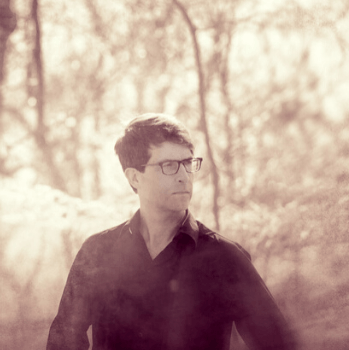What Photographers Need to Know About Copyright Law
For Photojournalists, Wedding Photographers, Stock Photographers, and Other Photographers
We created this Copyright Law for Photographers page to provide photographers with information on copyright law as it applies to photography. Whether you are a wedding photographer, fashion photographer, nature photographer, or another type of photographer, below we explain what rights photographers have under copyright law, why it is important to register photographs with the U.S. Copyright Office, and how to deal with copyright infringement. We also provide some resources specific to copyright law and the photography industry.
- What Rights Do Photographers Have?
- Do Photographers Own the Copyright to the Photographs They Take?
- Should Photographers Register Their Works with the U.S. Copyright Office?
- How to Know When a Photograph is Published or Unpublished?
- How Long Does Copyright Protection for a Photograph Last?
- Fair Use for Photographers
- Photography and Copyright Infringement
- Common Copyright Law Questions for Photographers
- Copyright Resources for Photographers
What Rights Do Photographers Have?
When a photograph meets the requirements for copyrightability, the copyright owner has several exclusive rights: (1) the right to reproduce the work, (2) the right to distribute the work, (3) the right to create derivative works of the work, (4) the right to publicly perform the work and (5) the right to publicly display the work.
So, what are the criteria for copyright protection? Copyright protection for photographs applies automatically once a photograph is originally authored and fixed in a tangible form, which includes storing digital copies of captured images on a memory chip in the camera or on a computer hard drive, saving files in the cloud, or printing the images on traditional film and paper.
After the camera was invented and the burgeoning photography industry was just beginning, the U.S. Supreme Court held that photographs should be protected by copyright law because they contained human authorship. Over the years, various courts have consistently explained and affirmed the creative elements that make a photograph protectable, illustrating that most photographs meet copyright law’s low threshold criteria of originality.
Copyright law does not protect ideas, facts, or concepts, but instead protects the creative choices a photographer makes when capturing an image. Protectable elements in a photograph that have been recognized by courts include how photographers adjust lighting, direct their subjects to pose, dress, and makeup, create entire scenes complete with props, find optimal camera angles, and make other compositional and directional decisions in order to express and convey different ideas, stories, feelings, and moments in the resulting photographs.
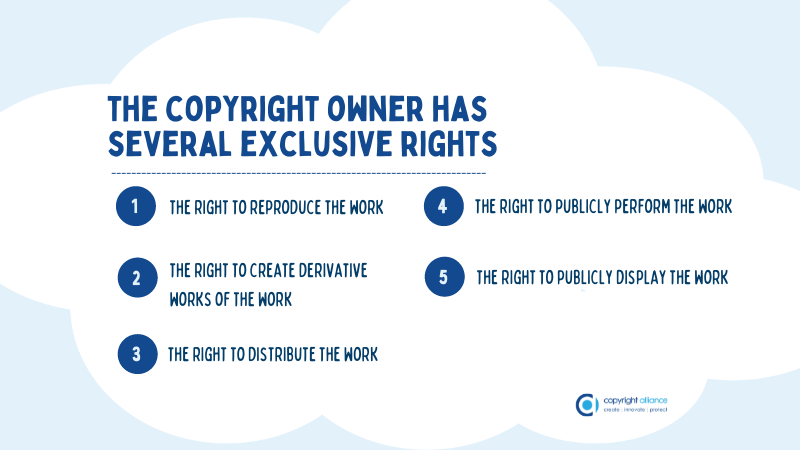
Do Photographers Own the Copyright to the Photograph(s) They Take?
At times, copyright law for photographers can get confusing with regard to a photographer’s copyright ownership to a particular photograph. A photographer’s copyright ownership can depend on the circumstances of the particular project or shoot. Particularly for collaborative projects or in instances where photographers are hired to conduct a photoshoot or photograph an event, it can be tricky to determine who owns the copyright to the photographs at the end of the day.
Generally, the Copyright Act recognizes the author(s) of a work as the copyright owner, but also states that the author(s) of a work can include employers or other people for whom the work was prepared under a concept referred to as the work-made-for-hire doctrine. Copyright law also recognizes that a particular work can have joint authorship, meaning that multiple authors hold an equal interest to the copyrighted work.
To avoid confusion over ownership issues, at the beginning of any photoshoot or project, it is important for photographers to know their rights, understand the intent of all involved parties, memorialize any important agreements or understandings, and carefully read over any agreements that may have been presented to them.
Joint Authorship and Copyright Ownership in Photographs
Jointly authored works are works that are prepared by two or more creators with the intent that their contributions be inseparable from one another. In a joint work, each of the authors hold an undivided, equal share to the copyright in the final work. Thus, the default rule is that each author has an equal claim to all the exclusive rights in the joint work—the right to reproduce, distribute, create derivative works, and publicly perform or display—unless they separately agree among themselves that the shares or division of rights or profits should somehow be different.
When photographers choose to contribute independently copyrightable works that they do not intend to be inseparable from a bigger, overall work, that work would be considered a collective work or a compilation. In a collective work or compilation, each author or copyright owner of an underlying, separable copyrighted work retains their copyright to that specific work. The rightsholder to the overall work would have a separate copyright in the overall work based on the selection, coordination, and assembly of the underlying works. The Copyright Act presumes that the rightsholder to the collective work or compilation has the right to reproduce or distribute the individual work so that it can be incorporated and used in the overall collective work or compilation.
Oftentimes, photographers may collaborate with other photographers, writers, photo editors, and other types of creators when developing a certain work. For example, a photographer may work with several assistants or a second photographer to arrange the lighting, props, directing, and positioning of the photographed subjects or cameras and may also collaborate with a professional editor after the shoot to retouch or enhance the photographs. Again, in any collaboration, it is best to express and memorialize in a written contract whether the creative relationship is a joint authorship. Without an express agreement, photographers may later find themselves arguing with their collaborators over whether they all intended to be joint authors for purposes of copyright ownership.
Is the Photograph a Work Made for Hire?
Photographers and their joint author(s) are usually the copyright owner of the photograph. But the work-made-for-hire doctrine outlines certain circumstances where the author and copyright owner of the photograph is an employer or third party. A photograph is considered to be a work made for hire if it is:
- (1) created within the scope of employment; or
- (2) a special type of work (contribution to a collective work, part of a motion picture or other audiovisual work, supplementary work, compilation, atlas, etc.) which has been specially ordered or commissioned via a written agreement stating that the work is a work made for hire.
If the work falls into one of the two categories, then it is considered a work made for hire for copyright purposes and the author is considered to be the employer or the person(s) who commissioned or ordered the work. For a further explanation about the work-made-for-hire factors, check out our works made for hire page. The American Society of Media Photographers (ASMP) also goes into detail regarding works made for hire in its blog post Works for Hire: How Not to Get Bitten.
Is the Photograph Licensed or Assigned?
If a photograph is not a work made for hire, the photographer can license or assign their rights to the photograph to third parties. The key difference between a license and an assignment agreement is that in a license agreement, the photographer only grants permission or authorizes others to a limited use of the photograph versus an assignment agreement where the photographer transfers or “gives away” all the rights to the photograph to third parties. It is more typical for photographers to license their photographs to their clients or to third parties for personal, commercial, noncommercial, or other types of uses, instead of outright assigning all the rights away to the client or third party.
In contrast, in an assignment agreement, the photographer is effectively no longer the copyright owner of the photograph, unless they terminate those rights. Copyright owners have an automatic termination right which allows them to terminate both licenses or transfers (assignments) of one or more of the exclusive rights of the copyright owner between 35th and 40th year after the license or transfer agreement went into effect. To learn more, check out our Copyright Law Explain page on termination rights.
But remember—if there are joint authors (unless there is a separate agreement between all authors), each author equally has the right to license or assign his/her own rights to the work without permission from any of the other authors, as long as an accounting of profits is provided to the others. However, in the case where one of the authors of a joint work wants to grant an exclusive license (more on that below) of a right(s) to the joint work, this could impact and restrict the rights of the rest of the authors and so permission from the other authors would be needed.
Understanding Licensing When Uploading Photographs to Social Media
Photographers frequently use social media and other internet platforms to promote their businesses and photographs. Like with all agreements, photographers should take care to read and understand the terms and conditions of social media user agreements to understand what the platform and platform users are permitted to do in regard to any uploaded photographs. For example, many social media user agreements state that any work uploaded to the platform can be freely used by other users on the platform in connection with the social media activities. Despite these often broad user licensing agreements, some popular platforms, such as Instagram, are starting to offer settings and tools that photographers can use to better control how others use uploaded photographs, by implementing certain features including those that blocks other users from embedding photographs uploaded to the platform.
Are the Rights in the Work Being Transferred Exclusively or Non-Exclusively?
Photographers should be aware of exclusivity provisions in license agreements. License agreements can have exclusive provisions, meaning the licensed third party is the only party who has the licensed right(s) (for example, the exclusive right to reproduce, distribute, or publicly display the photograph).
In an exclusive license, the copyright owner ends up giving the other party the entirety of the right(s) subject to the contract, and the copyright owner is effectively no longer the copyright owner of those rights.
License agreements can also have non-exclusive provisions meaning that the copyright owner(s) can license that same right to other third parties or use the right themselves. Under a non-exclusive license, a photographer retains all the exclusive rights to the photograph and could also grant a third party the ability to use one or more of those rights.
Should Photographers Register their Photographs with the U.S. Copyright Office?
As previously mentioned, copyright protection for a photograph begins as soon as it is fixed in a tangible medium. So, while a photographer does not need to register a photograph with the U.S. Copyright Office for that work to be protected by copyright, there are still many benefits to registering with the Office. These benefits include keeping a public record of the photographer’s copyright so that others know who to seek permissions from if they want to use the work, preserving a photographer’s ability to sue if copyright infringement occurs, and allowing a prevailing photographer to recover statutory damages and attorneys’ fees for the infringement. More information about how to register photographs can be found on the Copyright Office’s photography registration page.
To fully and correctly complete a photograph registration application for a single photograph, a photographer will need to know some basic information about the work, such as:
- What type of work is being registered;
- Whether anyone else has a copyright ownership interest in the work;
- Whether the work has been published, and if so, when;
- Whether the work contains pre-existing materials.
Although the U.S. Supreme Court recently ruled that copyright registrations will not be invalidated for mistake of law or fact, knowing important details about the photograph (like the publication status or whether the photograph is a derivative work) will help the photographer correctly complete the copyright registration application form and reduce delays in the registration process caused by any follow-up communication with the Copyright Office. In addition to completing the application, the photographer-applicant will also need to submit at least one copy of the photograph along with a registration fee to the Copyright Office.
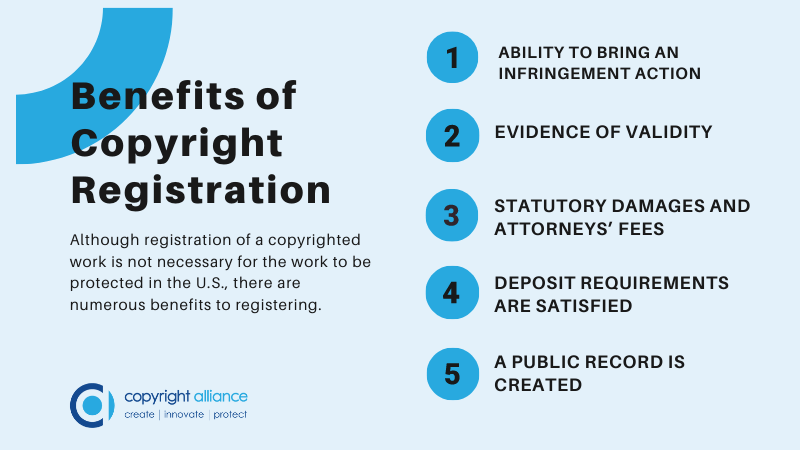
Photographers Can Register Their Photographs in Groups
Unlike other kinds of copyrightable works, photographers can register the copyright in their photograph with the U.S. Copyright Office by taking advantage of one of several additional registration options, including a group registration option for unpublished photographs, a group registration option for published photographs, and photographic databases.
In order to submit a group registration for multiple photographs the Copyright Office requires:
- all of the photographs must be either all published or all unpublished;
- all works in the group must be photographs;
- there cannot be more than 750 photographs in one application;
- all photographs must be created by the same photographer;
- the copyright owner for each photograph must be the same person or organization;
- there must be a title for the entire group of photographs; and
- for group registrations of published photographs, all the photographs must be published within the same calendar year, and the application must specify the earliest and the latest date that the photographs were published.
The Copyright Office also requires additional materials in the registration process, such as a list of the titles of the photographs being registered with their corresponding file names. The Copyright Office provides templates for the list for such group registrations on its photography registration page.
How to Know When a Photograph is Published or Unpublished?
Whether a photograph is published vs. unpublished can be difficult to determine. Knowing whether a photograph has been published is important for many reasons. As previously mentioned, photographers need to know the publication status of the photograph (or photographs in the case of a group registration) in order to completely and accurately submit the correct registration application to the Copyright Office. The publication year will be important to determining the term of copyright protection for an anonymous or pseudonymous work and for a work made for hire.
Under the Copyright Act, publication of a photograph occurs when:
- the copyright owner distributes or authorizes someone else to distribute copies of the photograph to the public; or
- the copyright owner offers or authorizes someone else to offer to distribute copies of the photograph to a group of persons for the purposes of further distributing copies of, publicly performing, or publicly displaying the photograph.
Importantly, a public display of a photograph does not itself constitute publication. For example, a photograph on a website is a public display of the photograph and is therefore not considered to be published. However, if the photograph is not just displayed but is also distributed by, for example, allowing others to download it or to include the photograph in a widely distributed newsletter, then the photograph would be considered to be published.
When a copyright owner restricts distribution of copies of a work to a select group with a limited purpose and without the right of anyone in that group to reproduce, distribute, or sell the work that is considered to be a “limited publication.” A “limited publication,” is another way of saying that a work is unpublished. For example, a photographer might send a copy of a photograph to a client, but unless the photographer authorizes the client to further distribute copies of the photograph, the photograph would be considered be a “limited publication” and therefore be unpublished.
We completely understand if the distinction between published and unpublished is confusing. Even the foremost experts in copyright at the U.S. Copyright Office conceded that the legal definition is extremely difficult to understand.
How Long Does Copyright Protection for a Photograph Last?
The term of copyright protection for a photograph lasts for the life of the photographer plus an additional 70 years. If the photograph is jointly authored, the copyright term lasts for life of the last surviving joint author/photographer plus an additional 70 years.
The term of protection is a bit different for works made for hire created by corporations or businesses as well as anonymous and pseudonymous works. That’s because for these types of works there is no “life” by which to measure the term. For photographs that are created as a work made for hire, the term of copyright is 95 years from year of first publication or 120 years from year of creation of the photograph—whichever is shorter.
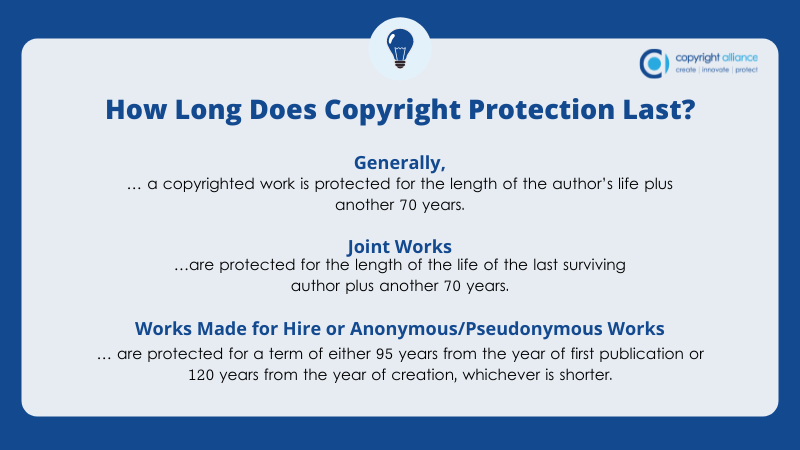
Fair Use for Photographers
Fair use is an important exception in copyright law that allows photographers and others to use a copyrighted work without the copyright owner’s permission and without paying the copyright owner. The Copyright Act provides several examples of what kinds of uses may qualify for the fair use exception, such as works of criticism, comment, news reporting, and scholarship. Ultimately, whether something qualifies as a fair use is determined on a case-by-case basis by balancing four factors:
- The purpose and character of the use, including whether such use is of a commercial nature or is for non-profit educational purposes;
- The nature of the copyrighted work;
- The amount and substantiality of the portion used in relation to the copyrighted work as a whole; and
- The effect of the use upon the potential market for or value of the copyrighted work.
All four of these factors have to be evaluated; no single factor can determine whether something is a fair use or not. The fair use exception can be a bit confusing to understand, but here are some pointers as photographers think more holistically about fair use in the photography contexts:
- Under Factor 1, nonprofit, educational uses of a work are more likely to qualify for the fair use exception. However, it is important to note that nonprofit, educational uses can also be commercial, in which case the first factor would be weighed against a finding of fair use. In one case, a court held that though a book containing copyrighted photographs of Pablo Picasso’s works might have been intended for use by non-profit organizations such as libraries, academic institutions, art collectors, and auction houses, the user’s use of the product was largely irrelevant because the book was a commercial venture.
- Under Factor 1, if a particular use of a copyrighted work is transformative, this would weigh in favor of a fair use finding. A transformative use is one in which the use has a fundamentally different purpose and function than from the purpose of the original underlying work and does not act as a substitute for the original use of the work. To learn more about how courts have analyzed transformative use in photography cases, including in news reporting and fine art contexts, check out our blog post highlighting a few key cases.
- Under Factor 2, photographs are almost always considered to be works of a highly creative nature (as opposed to works of a factual nature), and courts often weigh this factor against a finding of fair use. However, another consideration in the second factor analysis is whether the used work is published. Use of an unpublished work would also weigh this factor against a fair use finding. The Supreme Court emphasized in a case that the right of an author or a rightsholder publication right to his or her work was critical to the rightsholder’s ability to exercise full creative and quality control over his or her work.
- Under Factor 3, a use that takes more of the protectable elements of the copyrighted photograph than is necessary to achieve the purposes and goals of the alleged fair use, would result in a court weighing this factor against a finding of fair use. There is no specific number or amount (e.g., 10% of the photograph) of a copyrighted work that can be used as the determination of whether too much of the copyrighted work was taken” is decided on a case-by-case basis. For example, in one case, a court held that though a substantial portion of the photograph was used in a parodic movie poster, the large amount of copying was necessary to achieve the parodic effects of the allegedly infringing work. However, it is important to keep in mind that the analysis of this factor does not stop at just quantitative takings. The Supreme Court held in one case that even if only a small portion of a work is taken, the use may not qualify for the fair use exception if it takes the “heart” (i.e., fundamental, crucial expression) of the underlying work.
- Under Factor 4, a use that causes market harm to the underlying photograph would weigh against a finding of fair use. But it’s important that photographs understand that courts will consider the kind of market harm. If a subsequent work substitutes for the original photograph in a market for that photograph, a court would weigh this factor against a finding of fair use. But if someone uses a photograph in a criticism or review of the photograph or in a parody, which drives the public away from purchasing the image, this would not count as market harm for the purposes of analyzing the fourth fair use factor.
For additional guidance on how to consider the four fair-use factors and how it affects photographers’ copyright interests, please watch Copyright Alliance’s fair use educational videos for free. Or join our free membership to watch in-depth webinars on fair use.
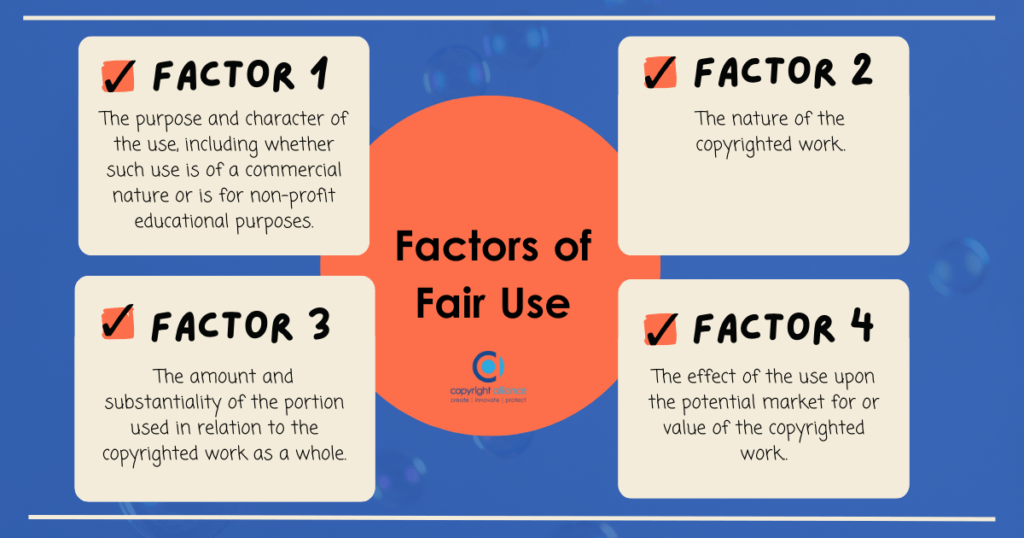
Photography and Copyright Infringement
Copyright infringement occurs when someone uses one or more of a copyright owner’s exclusive rights without the owner’s permission and there is no exception or limitation in copyright law that otherwise allows for that particular use. The infringing act might be innocent, but that doesn’t excuse the fact that it is implicating someone else’s rights.
Copyright infringement of photographs can occur in many ways. But again, when evaluating whether infringement has occurred, the photographer must remember that exceptions like fair use might excuse that otherwise infringing activity. Additionally, a photographer should also remember that copyright law protects expressions and not ideas and therefore it does not protect individual elements such as subject matter, pose, concepts, ideas, or themes of the photograph. Rather, copyright law protects the creative expression resulting from the particular ways a photographer arranges or makes decisions to capture such elements with the camera.
If a photographer determines that the material is indeed a copyright infringement of the photograph, there are some steps the photographer can take to try to stop the infringement and/or get compensated by the infringer. The photographer can contact the infringer directly to request that the infringer cease the infringing activities, take down the infringing material (if its online), and/or be compensated for the infringing use (including and damages incurred by the photographer). If contacting the infringer directly does not work, the photographer may consider sending a Digital Millennium Copyright Act (DMCA) takedown notice to the platform that is hosting or linking to the infringing material and ask for it to be taken down and/or to sue the infringer in federal court or the Copyright Office’s small claims court called the Copyright Claims Board (CCB).
Sending a DMCA Takedown Notice
If a photographer discovers that their photograph is being infringed on a web service or platform (and the photographer determines that there are no other copyright law exceptions that apply (like fair use)), they can send a DMCA takedown notice to the online platform or service where the infringing material is found, requesting that the material be taken down. For example, if an infringement is found on Facebook, the photographer could send a DMCA notice to Facebook by filing out an online form requesting the infringing materials be taken down. The DMCA Takedown Notice process does not guarantee the infringer will stop the infringing activity. But at a minimum, it does put the infringer on notice that they are making use of a copyrighted work without the copyright owner’s consent.
There are a number of elements that should be included within the notice, such as a signature, contact information, and identification of the work being infringed upon. It is important to know what a DMCA takedown notice should include. Many popular social media platforms and online service providers will have their own DMCA forms and tools that photographers can use to enforce their copyrights.
Suing the Infringer
If the infringer refuses to take down the material and the platform or online service provider agrees with the infringer, then the only way for the photographer to get the infringing material removed (and to get damages stemming from the infringement) is to sue the infringer in federal court. Federal courts have jurisdiction over copyright infringement cases, which means that a photographer cannot bring a copyright infringement claim in state court. As discussed before in the registration section, photographers should remember that in order to sue in federal court, the U.S. Copyright Office must have made a registration determination (either accepting or denying the application) regarding the infringed photograph.
As an alternative to suing in federal court, a photographer can sue for infringement in the copyright small claims court located within the U.S. Copyright Office. This small claims court, which is called the Copyright Claims Board (CCB), can award damages, but cannot order the infringer to stop (unless the infringer agrees). There are other differences between federal court and the small claims court, including the fact that the infringer can opt-out of the proceeding (in which case the photographer’s claims will be dismissed) and that there is a cap on damages. However, unlike the federal court, the small claims court is designed to be a more accessible and affordable alternative forum for parties to hopefully settle disputes like copyright infringement claims.
Common Copyright Law Questions for Photographers
Does copyright law give photographers the right to photograph people?
Copyright law does not give photographers the legal right to photograph people. This is because copyright law only gives rights to creators to protect, enforce, and otherwise exploit (or not) their work. Other forms of law, including right of publicity and privacy laws, govern whether a separate release from the photographed subject is needed.
If a photographer is hired for a photo shoot or a specific job by a client, is the client the copyright owner of the photographs?
The general rule in copyright law is that the author of the work is also the copyright owner. Photographers who are hired on an independent contractor basis or for a specific job are usually the copyright owner to the photographs, even if the photographs were taken for a client. But the photographer will likely have a contract with the client that explains who owns the photographs and how the client may use the photographs, such as using them in the client’s marketing and promotional materials, reprinting the photographs, and other uses that the photographer and client agree upon. However, in certain circumstances, the photoshoot or specific job might qualify as a work made for hire under copyright law, meaning that the author and copyright owner of the work is the third party who commissioned or specially ordered the photographs or the employer.
Does a photographer have to include a watermark, metadata, or copyright notice on the photograph so that the photograph can be protected by copyright law?
A photographer does not have to include Copyright Management Information (CMI) in the metadata, watermarks, or a copyright notice with the photograph in order for the photograph to be protected by copyright law. Again, the photograph is automatically protected once it meets the criteria for copyright protection. However, including or displaying information about the photograph puts others on notice of who the copyright owner is and who to contact to obtain licenses or permissions to use the photograph. Additionally, under the Digital Millennium Copyright Act (DMCA), if someone intentionally removes CMI from the photograph with the knowledge that this will induce, enable, facilitate, or conceal the infringement of that photograph, then the photographer can bring a claim against the party who removed the CMI.
If a photograph is registered as part of a group registration, can the photographer recover statutory damages for each photograph?
Unlike most other creators, photographers are able to register their works in a group through either a group registration for unpublished photographs and the group registration option for published photographs. The Office considers each photograph registered within a group registration to be a separate work, meaning that the photographer can recover separate statutory damages for each infringed photograph registered within the group.
Copyright Resources for Photographers
Additional Copyright Law FAQs (Copyright Alliance)
- Do I have the right to use photographs taken by my late father in the 60s and 70s in a book?
- Photographers are regularly modifying old photographs, so at what point would a photograph need to be re-registered?
- When I’m registering a group of photographs, is it better to submit individual images, or should the images be grouped together on a one-page PDF file? If individual files are preferred, what is the best file size and type to deposit?
- We have been unsuccessful in depositing electronic copies of images, so we deposit by mail. Are there any plans to upgrade or simplify the technology to handle mass deposit needs?
- What’s the best way to go about registering hundreds or thousands of photographs? There seem to be some limits on what you can submit as a batch. Can you clarify what the limits are, if any?
- Can We Get Rid of the 750 Image Limit Per Registration of Groups of Published Images?
- I would like to register images from my archives. As a commercial photographer, it is impossible to determine when images have been published by clients.
- What is the best method to register when I have hundreds of unpublished images from over the years, but I have no idea when they were taken?
- What is the best way to register when I have hundreds of published images that I’ve taken this year?
- What is the best way to register when I have hundreds of published images from over the years, but I have no idea when they were taken?
- It is unclear to many photographers what types of mediums or transactions make an image published for registration purposes? Which of the following scenarios would make an image published?
- If a photograph was previously registered inside of a collection or a group, and has now gained independent success, should the image be re-registered as a single work to maximize the benefits of registration?
- If a photographer registers 500 images using either the group registration for published or unpublished photographs, does each image receive individual statutory protection, or is the group only eligible for one single statutory damage award?
Other Copyright Resources for Photographers
- North American Nature Photography Association Resources (NANPA)
- Membership Resources (ASMP)
- PPA Contract Templates (PPA)
- Copyright Commandments (DMLA)
- Copyright Registration for Photographs (U.S. Copyright Office)
- Copyright Law: Understanding Your Right as a Photographer (PPA)
- Copyright FAQs (PPA)
- Photographers Should Be Cautious About Using Murals as Backdrops (PPA)
- Through Our Lens Blog (Getty Images)
- Copyright Management Suite of Tools (RightsClick)
Photographer Creator Spotlights
The Copyright Alliance created a Creator Spotlight series to highlight creators’ careers and share the copyright challenges they have faced. Below are a few of the creator spotlight blogs that feature photographers:
YOU can participate in our Creator Spotlight Blog Series too. Read these instructions to be featured!
We will continue to update this page as more resources become available on copyright law for photographers, so keep checking back.
Individual creators, such as photographers, can join our copyright community for free to stay up to date with all things copyright.



